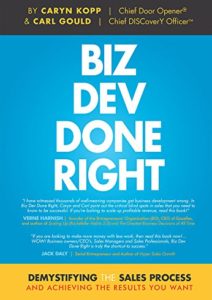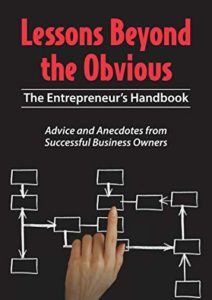We cannot control the economic climate in which we find ourselves. We can, however, face up to it and make the most of it. Ten years ago offering a prospect the opportunity to save 10 percent might have been enough to close it. Today, though, a mere 10 percent isn’t worth the time and risk a decision maker must take to upset the status quo. To motivate a decision maker into action, he/she must feel that the result of that decision will benefit him/her somehow. This new reality means that decision makers are more hesitant to investigate new options or make a move. And, there are layers of complexity to the approval process including additional decision makers who also must feel that the move will benefit them personally. Closing sales takes longer than it used to, and prospects must be nurtured in a way that truly deepens relationships, especially early on.
Contrary to the way it used to work, nurturing today isn’t the sort of thing done on the golf course. Relationships deepen by sharing valuable information that will lead prospects from the stage in which they’re open to talking to you to the point they’re convinced they really need you. It might take three interactions or it might take fourteen to move them from that “open stage” to the “convinced stage.” Be prepared for both the mathathon and the sprint. A nurture campaign that is well thought-out will provide you an interaction plan can trigger an earlier close. (Important note: a nurture campaign consisting of emails saying, “Just checking in to see if you have any needs” falls well short of what we would refer to as “productive activity.”)
In the new paradigm of selling, decision makers don’t have time to evaluate another solution without a good reason, so you want each of these communications to demonstrate value for them. This can include educational material, thought pieces or explanations of how the work you do is benefiting your existing clientele. This material is much stronger when it includes meaningful numbers or stories, which demonstrate that what’s in it for them is tangible, not vague or unquantifiable. When putting together your communications, think about your decision makers and how they can justify buying from you to their bosses. With these materials, do your best to answer their questions before they ask.
Sometimes the elongation of the sales cycle leads to fatigue on the part of sellers. It can be very tempting to want to skip the steps needed to convince the prospect or build the trust relationship. It can even be tempting to give up entirely. Once you’ve started the business development process, do not abandon it unless you have new information that leads you to believe the prospect would no longer make a good client. Too often a seller works hard to get the ball rolling and gives up, only for the competition to step in and close a deal.
Longer sales cycles can be exhausting, but they are the reality when prospective clients are feeling tentative with their dollars. They are often concerned about risking their careers by making the wrong vendor choices or by the amount of time it will take them to implement a different solution. As you plow through the process, remember that those dollars will only be awarded to the vendors with the patience and discipline to see it through to the end.
Pipeliner CRM empowers salespeople to establish solid relationships with clients. Get your free trial of Pipeliner CRM now.














Comments